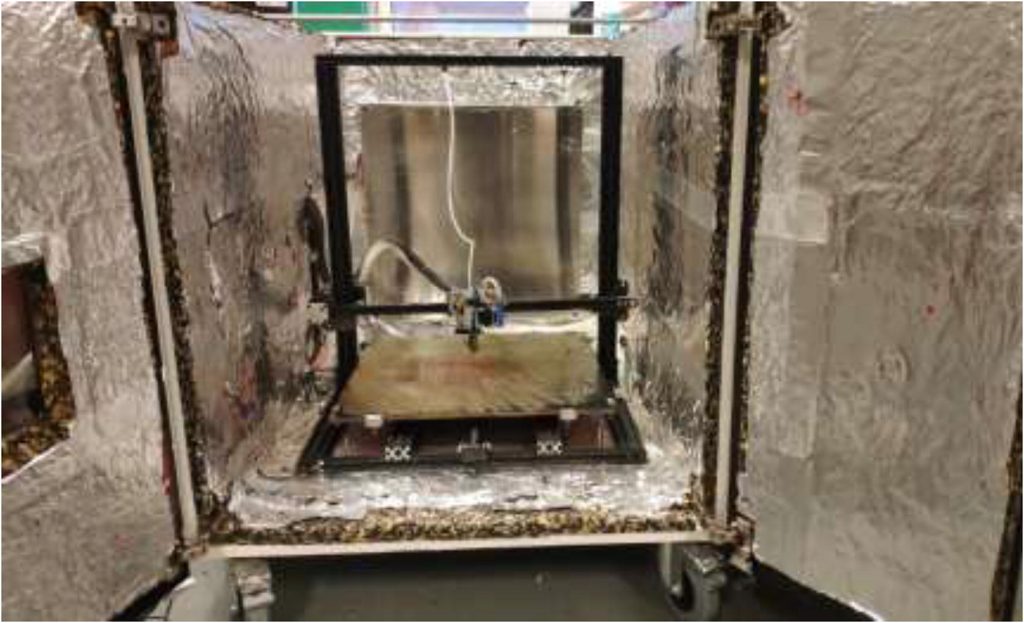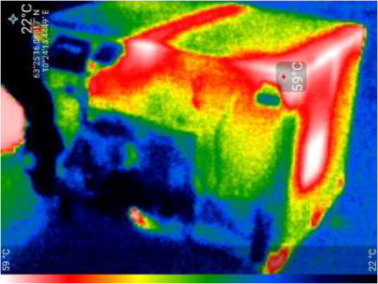Norwegian University of Science and Technology (NTNU) researchers have developed a low-cost, open-source desktop 3D printing upgrade that could provide users with an accessible new way of processing high-temperature polymers.
Designed as an add-on for existing FFF machines, the team’s mod, consisting of a Creality CR-10 Plus system fitted with a liquid-cooled drive extruder and stepper motors, is housed inside a home-made chamber that’s able to maintain a build temperature of 135°C, allowing it to deposit reinforced materials with fewer defects.
According to the engineers, their setup can be assembled for “less than $1,700,” including the system, and added to any desktop unit to make it “capable of printing high-performance materials.”

FFF 3D printing: a brief history
Back in 1989, Stratasys Co-founder Scott Crump filed a patent application for what he called fused deposition modeling, a process he integrated into the firm’s first ‘FDM’ machine: the 3D Modeler. Then, in 2009, two decades after the patent was initially filed, it expired, leading to a consumer 3D printing boom, led largely by the RepRap Project and Dr. Adrian Bowyer’s work at the University of Bath.
At the time, this expiry also spurred on a whole community of devs, which went on to found start-ups that have become household names, like MakerBot, Ultimaker, and Prusa, and the technology continues to be the most-used in the industry.
However, even though Stratasys’ wider extrusion technology was later built upon in the form of fused filament fabrication (FFF), the heated build chamber designs of its systems remained protected under a separate patent filed in 2000. As a result, until last year, its competitors had been forced to find new ways of keeping their printers’ motion control parts and build chambers separated.
According to the NTNU researchers, many such FFF systems “can now meet the strength and temperature resistance required for industrial applications,” but the lack of accessibility around machines with high-temperature printing capabilities has led to “limited research opportunities,” particularly when it comes to material qualification.
To overcome this, the team has taken advantage of the expiry of Stratasys’ build chamber patent in 2021, and come up with a novel approach to making high-temp FFF production more accessible. In fact, they say that their system’s build chamber can even run at higher temperatures than commercial $50,000 systems like the AON M2, meaning that it could “contribute to the [future] progress of distributed manufacturing.”

Accessible, high-temp production
In essence, the researchers’ desktop 3D printer upgrade has been built around two IKEA METHOD cabinets, which, once connected, feature a joint 800 x 1200 x 800mm build volume. During the construction of their system, the team fitted it with steel plating, insulation mats, and a heat-resistant glass plate for build viewing, before sealing it with aluminum tape and gaskets to ensure its safe operation.
To power their novel build chamber, the team fitted it with a 2.5 kW 500 mm x 500 mm silicone heater, which was mounted to an aluminum plate, capable of dissipating heat generated throughout production. Eventually, the device was also equipped with reservoirs and radiators designed to create ‘liquid-cooling loops,’ that prevent its stepper motors and hotend from overheating during operation.
Once the team had completed their prototype, they attached it to a Creality CR-10 Plus, by disassembling the 3D printer down to its frame, before reassembling it inside the chamber and connecting it up, and during summary testing, they found they were able to use an integrated controller to modulate the set-up’s liquid-cooling functionality as needed.
Although these tests did reveal unit heating loss along its top gaskets and viewing window, it did prove able to run consistently at 135°C, with a nozzle temperature of 400°C. Resulting parts, including a carbon fiber-reinforced PEEK-3D printed benchy and complex vase, also possessed an excellent level of detail and consistent quality from top-to-bottom, a key indicator of uniform build chamber temperature.
Likewise, compared to similar specimens made on a Prusa i3 MK3S system, the team’s modified machine yielded parts with 22% higher tensile strength, showcasing the benefits of its humidity-controlling capabilities.
While the NTNU engineers have conceded that their build requires a high level of “familiarity with 3D printers, soldering, wood, and metalworking,” they maintain that with sufficient knowhow it can be applied to “most commercially-available [FFF] printers,” in a way that could “enable further research into, and the improvement of, high-performance materials.”
Those interested in building the upgrade themselves, can find the researchers’ full cost breakdown and build instructions here.

Innovation in heated chamber design
Given that until recently, Stratasys’ build chamber patent had prevented this element of its machines from being replicated, other FFF 3D printer manufacturers have long been forced to find innovative cooling solutions. Consequently, now that Stratasys’ patent has expired, many of these have been quick to highlight the efficacy of their machinery.
For instance, when contacted by 3D Printing Industry for comment on the subject, Davide Ardizzoia of 3ntr.net said “the expiration of Stratasys’ patent was not going to change that much in its offering.” Similarly, Edward Feng, Global CEO of Raise3D, claimed in our industry insider forecast last year, that his firm “doesn’t include patent expiration as a factor on its innovation roadmap.”
Elsewhere, engineers at the University of Sydney and University of Science and Technology of China have made recent advances of their own, developing a novel high-temperature 3D printer with potential aerospace applications. Designed to be capable of processing PEEK at up to 400°C in orbital space conditions, it’s thought that the system could be deployed within future satellite repair missions.
The researchers’ findings are detailed in their paper titled “High-performance polymer 3D printing – open-source liquid cooled scalable printer design,” which was co-authored by Andreas Hagerup Birkelid, Sindre Wold Eikevåg, Christer W.Elverum and Martin Steinert.
What are the 3D printing trends for the coming year? Read our article with insights from over 40 experts.
To stay up to date with the latest 3D printing news, don’t forget to subscribe to the 3D Printing Industry newsletter or follow us on Twitter or liking our page on Facebook.
For a deeper dive into additive manufacturing, you can now subscribe to our Youtube channel, featuring discussion, debriefs, and shots of 3D printing in-action.
Are you looking for a job in the additive manufacturing industry? Visit 3D Printing Jobs for a selection of roles in the industry.
Featured image shows the NTNU researchers’ sub-$1,700 high-temperature FFF 3D printing upgrade fitted to a Creality 3D printer. Photo via NTNU.



